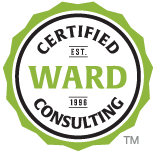Like you, I’ve been spending a lot of time online watching, listening and learning. Attending webinars to learn new skills and listening to expert podcasts to feel more connected.
On average, most presenters don’t provide value until 5-7 minutes into their content. Why do we waste those first few critical minutes talking about ourselves, reminding each other of housekeeping expectations or starting off with a polling question that we will never reference later on?
You lost me at Hello.
Your audiences are busy and they’re deciding whether to give you their full attention or multitask during your presentation. Here’s 3 quick tips to earn their attention early on:
1. Skip the self-intro. In the words of Anthony Parinello, “They don’t give a hoot about you until they know what you can do for them” (Selling to VITO – Very Important Top Officer [LINK]). When we’re training, we send our bio in advance. When we’re speaking, someone else has introduced us. On Zoom, our name is in the participant list, and there’s a chance the attendees have already Googled our name to see what we’re about.
Rock your presentation and they’ll want to learn more about you.
2. Add value right away. Let the audience know how your topic will help them have a better day. What changes can they make right now to make their lives easier, be more productive, or make more money?
Say it clearly and early on.
3. Engage. But, really engage. If you use a poll or ask a question, acknowledge their responses and have a conversation about what they share. The audience has done their part, they’ve participated. It’s respectful and impactful to answer their questions and speak about what they care most about.
Make them feel heard and build your rapport at the same time.
If you’d like more virtual presentation tips, email me & I’ll add you to our mailing list.

